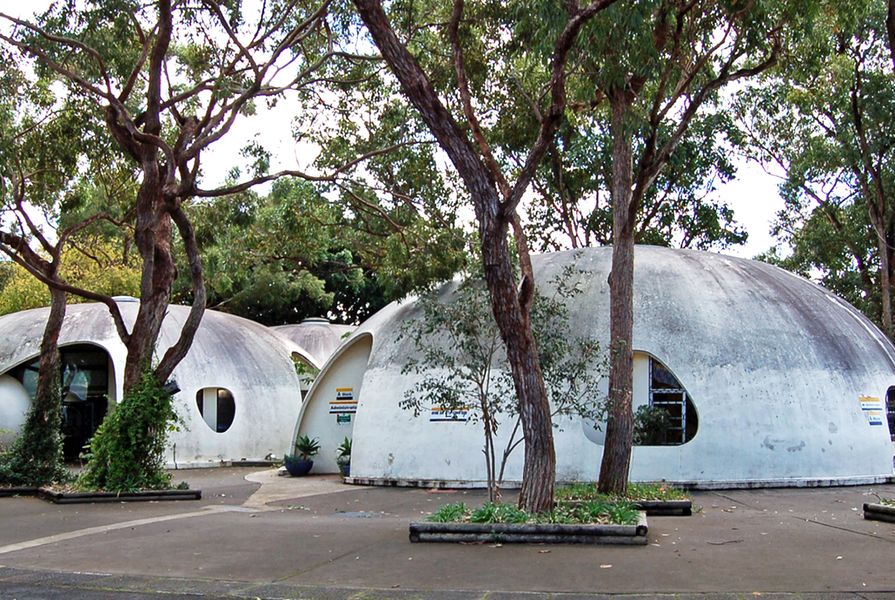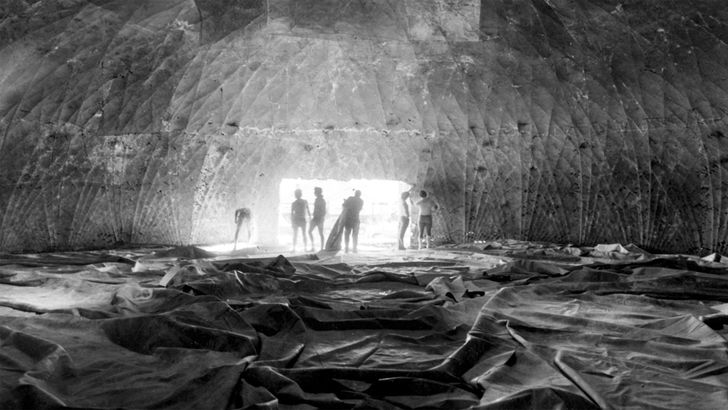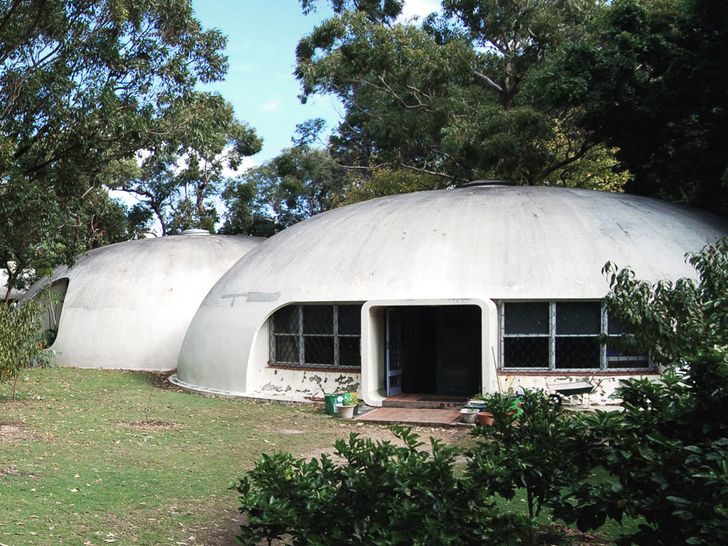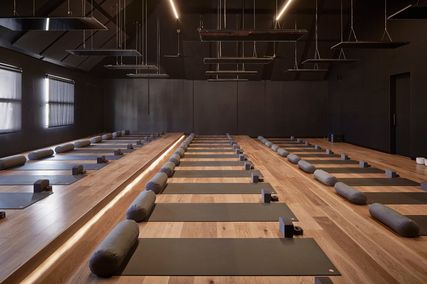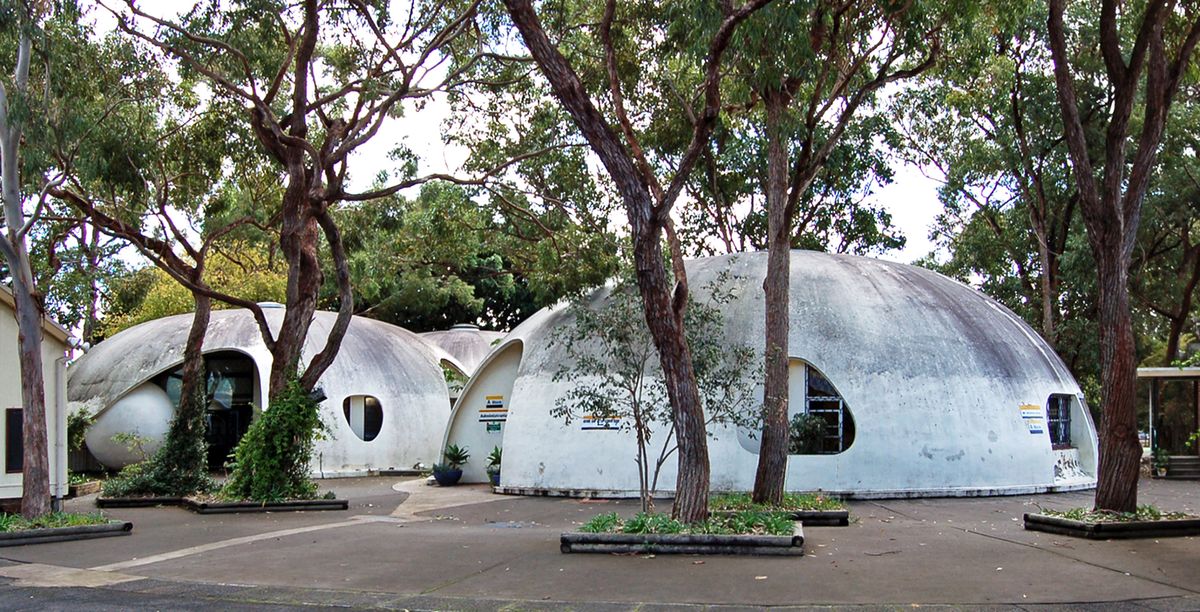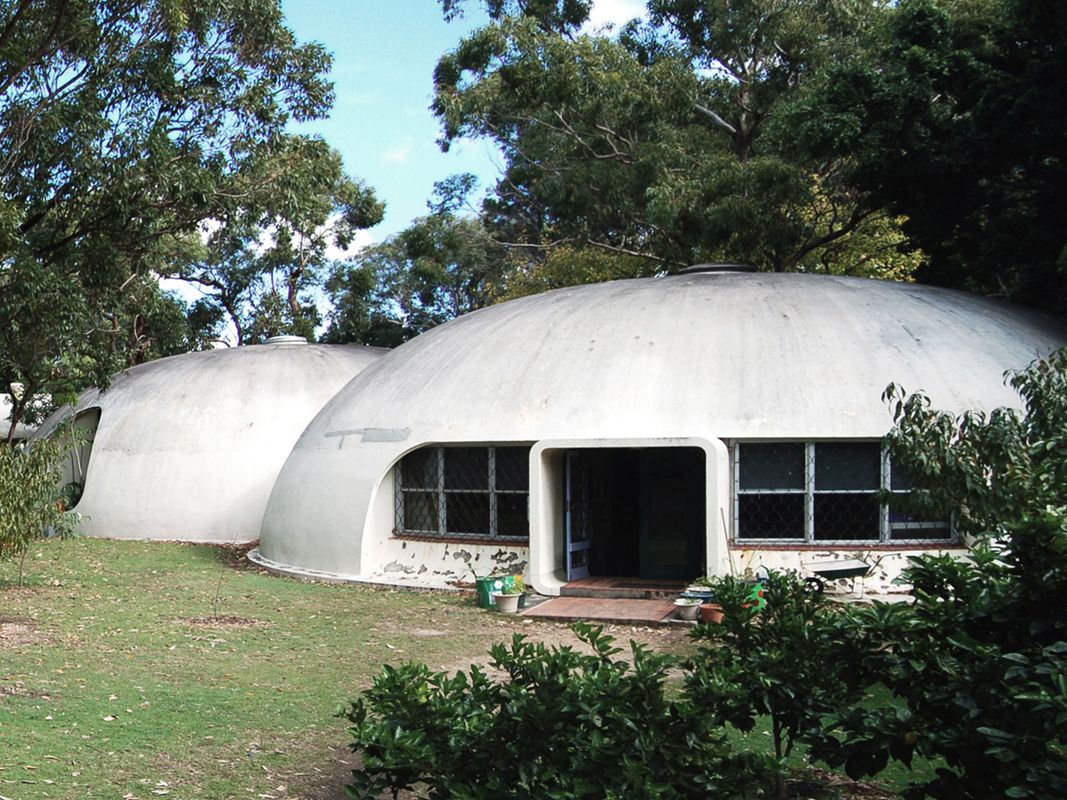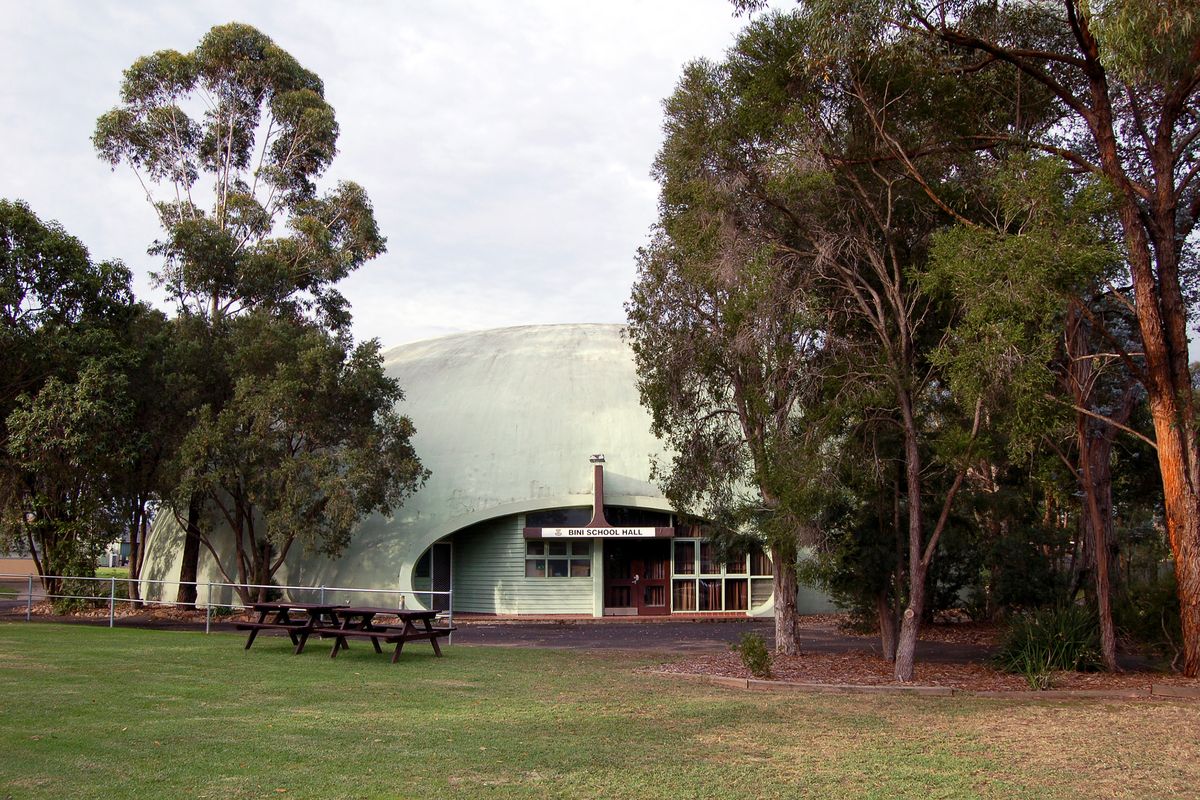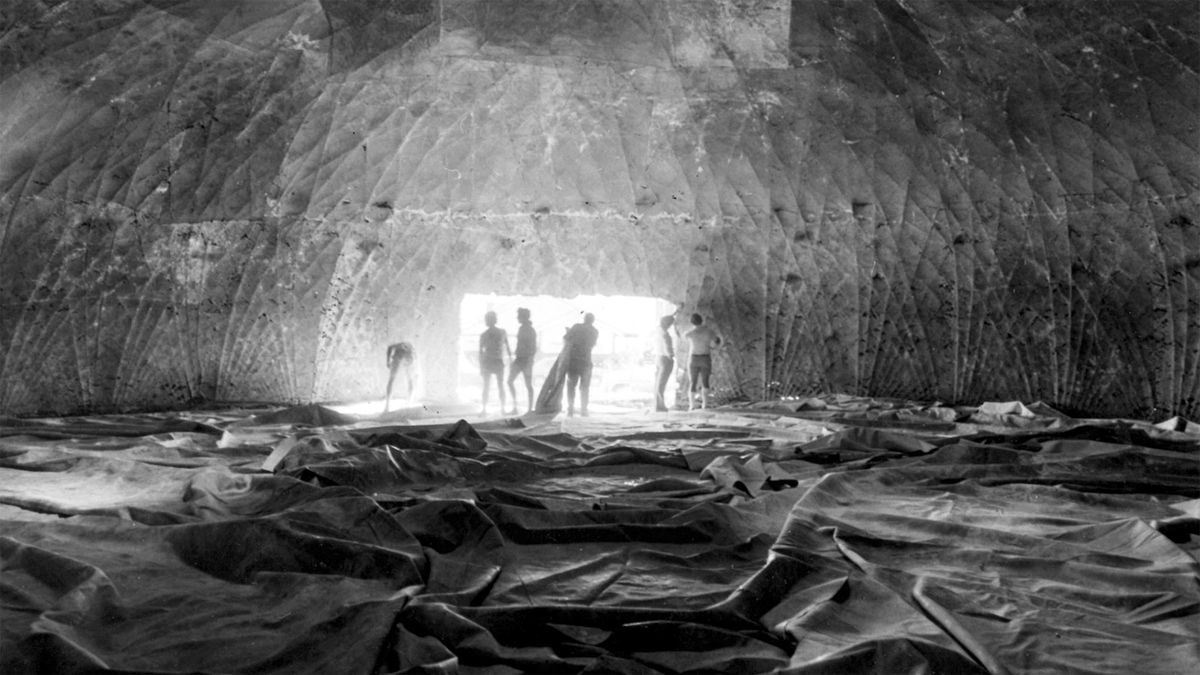In 1974, the Department of Public Works in New South Wales launched a program that would see concrete shells used for the rapid development of public schools to fulfil an election pledge. Fifty years later, some of these structures still stand, and one school has plans to restore theirs.
The department looked to the Italian architect, Dante Bini, who, in 1964, had invented a radical construction system that enabled shell-like structures to be erected quickly and rather inexpensively through the use of an inflatable membrane. The construction process involved pouring a thin layer of concrete over the membrane, which was covered with a network of reinforcing rods. The entire process, from pouring the concrete to completing the finishes, took approximately two weeks.
By the 1970s, the Binishells, patented in 1964, were being reproduced worldwide. After observing the success of the system from afar, the department was eager to see it introduced in NSW. Concurrently, Dante Bini was looking for new work opportunities, and so, the department facilitated Bini and his family’s relocation from Europe to Australia.
Interior of the Ashbury Public School, NSW, 1977.
Image: Max Dupain
According to the NSW Department of Education, 15 Binishells – including multi-shell complexes – were constructed at 14 public schools between 1974 and 1979, making it the “largest collection of Binishells in the world.” The shells come in either a diameter of 18 metres or 36 metres.
The schools were Narrabeen North Public School, Killarney Heights Public School, Peakhurst High School, Randwick Girls’ High School, Pittwater High School, Ingelburn High School, Ku-ring-gai High School, Georges River College Hurstville Boys Campus, Fairvale High School, Ashbury Public School, Callaghan College Jesmond Senior Campus, Richmond High School, Gateshead High School (now Hunter Sports High School), and Broadmeadow High School (now Hunter School of Performing Arts).
The Binishells constructed as part of the NSW public school program all took on the form of a dome. The first to be built were those sited at Narrabeen North Public School – a complex of three domes, two of which are connected – built in 1974.
The Binishells still in operation include the complex at Narrabeen North Public School, one at Ku-ring-gai High School, one at Ashbury Public School, one at Fairvale High School and one at Georges River College Hurstville Boys Campus. They are predominantly used as administration blocks, libraries, multi-purpose halls and out-of-school-hours care facilities.
Binishells at Fairvale High School, photographed in May 2014.
Image: Alberto Pugnale
Alberto Pugnale, architect, senior lecturer in architectural design at The University of Melbourne and co-author of Architecture Beyond the Cupola: Inventions and Designs of Dante Bini, said the structures hold historical significance as Australia was the only country to initiate a specific school program that would facilitate the construction of the Binishells.
Furthermore, the domes in NSW represent some of the only instances in the world where Dante Bini himself was heavily involved throughout the design and construction process.
Pugnale explained that because the Binishell was patented it meant that architects, engineers and construction companies were replicating the system across the globe, often without any involvement or participation of Dante Bini. There were even structures made using the Binishell system in other parts of Australia that were not designed by Dante Bini, including a shopping centre in Queensland and some in Victoria, which have since been demolished.
“The first experiments in Italy were conducted directly by him because he was testing and attempting to enhance the technology. Also, Dante Bini’s office, the first office of the Binishell company, was within a Binishell. Apart from those instances and the instances in NSW it is really quite difficult to track down where he may have been personally and directly involved,” Pugnale said.
“In Australia, since he was employed by the Department of Public Works in New South Wales, the designs for the schools were directly made by Dante Bini. That’s probably also the reason why you can find more conceptual sketches of the original designs in Australia.”
Narrabeen North Public School, photographed in May 2014.
Image: Alberto Pugnale
As the Narrabeen North domes’ 50th anniversary draws closer, plans to restore them have been revealed. A spokesperson from the NSW Department of Education said they are currently in the process of developing a scope of works with an engineer for the school’s Binishells. Once the scope is finalized, funding will then be confirmed.
“We are consulting with stakeholders and heritage experts where remediation work is required,” the spokesperson said. “The structures are complex due to their dome shape and heritage significance and require careful attention when considering repairs and restoration including waterproofing.”
Pugnale said finding a new purpose or function for the Binishells is not always a simple task. Due to their dome shape, the structures have acoustic challenges, particularly if you are sitting in the centre as the sound can reverberate back at you. “They would not be ideal for concerts or performances, for example,” he said. “The Binishells that have been used as sporting facilities seem to have worked pretty well in the past, they could potentially also be used as libraries.”
Pugnale also said using a Binishell permanently for residential purposes could be challenging as walls and ceilings in a shell typology function as a unified system, rather than as separate entities. However, there are examples of holiday homes in Trinity Beach, Queensland, and southern Italy that function well as unique, temporary accommodation. “If you find the right function, then they can be used successfully,” he said.
All of the remaining Binishells have some level of heritage listing. The domes at Narrabeen North, Ashbury and Ku-ring-gai are state heritage listed, while Narrabeen North and Ashbury are also listed as local heritage sites. All of them are listed as heritage significant on the department’s S170 Heritage Conservation Register, which ensures that the buildings are managed and maintained.
Pugnale attributed people’s fascination with Binishells to the innovative construction method, the rapidity of construction and their distinct “futuristic” look. “When you place the reinforcing rods on the grounds, they are flat, and then they bend together with the concrete while it’s taking shape. That’s a very interesting aspect of the Binishell system,” he said. “Another aspect is that, in most cases, these domes sit in a natural landscape so there is this contrast between natural and artificial, and in a way, that creates the impression of a futuristic building.”
Another intriguing element is the way in which the Department of Public Works NSW implemented the system, setting the Binishells in NSW public schools apart from those found elsewhere in the world.

